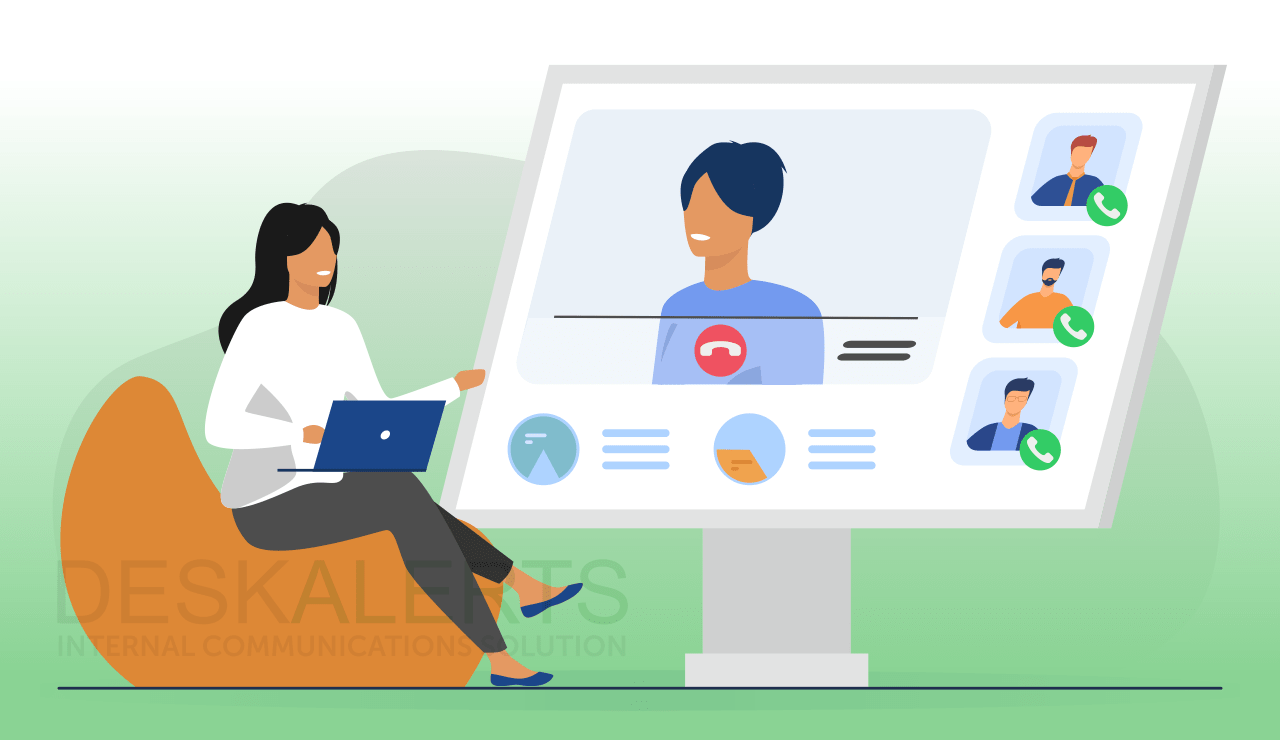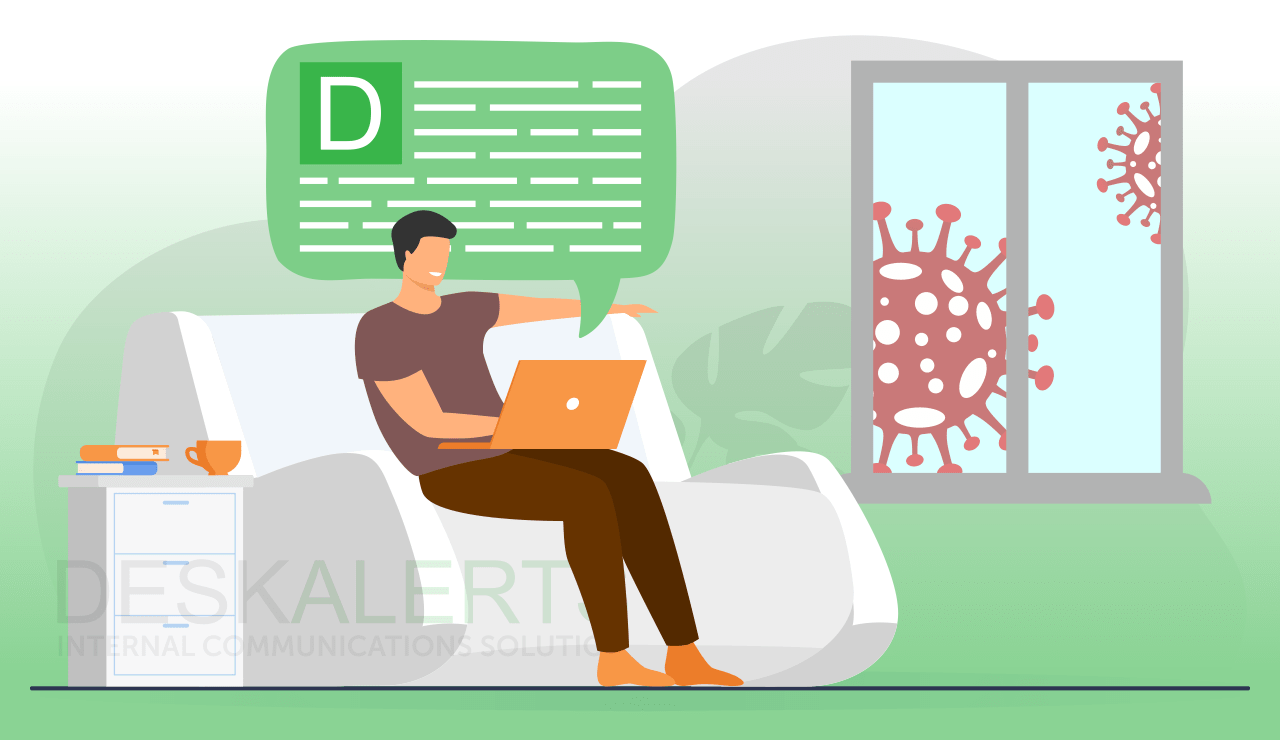
As some parts of the world emerge from COVID-19, many businesses are re-evaluating the ways their workplaces are structured including how, when and where their employees work.
COVID-19 sped up an inevitable digital transformation of the workplace and as people have been working remotely over the past year, it has also highlighted many inefficiencies in the ways that workplaces functioned in the pre-COVID era. For many managers, this could be a good time to take stock of how you intend for your employees to work in the future, and to ensure that you have the right digital tools to drive efficiency and productivity.
Table of contents
New ways of working in a post-COVID landscape
Challenges for businesses as employees return to the office post-COVID
How digital tools can help the transition to the new way of working
New ways of working in a post-COVID landscape
While some businesses and their employees are keen to go back to the way things were before COVID, for many more it is increasingly obvious that our old ways of working are dead forever. Some trends that are emerging include:
1. Remote working as standard
As many businesses found themselves with remote workforces practically overnight as a result of stay-at-home orders, they’ve also been seeing that productivity hasn’t been affected.
Many companies are now questioning why they pay for large overheads in the form of corporate office space when their employees can do the work from home. Many companies are not renewing leases, or are substantially shrinking their footprints.
In Australia, for example, Property Council data shows that office space vacancies in 2021 are the highest they have been for 20 years.
A McKinsey study estimates around three to four times more people are likely to work remotely all of the time after the pandemic compared with the number who worked remotely before the pandemic.
>> Learn how to enable remote workforce <<
2. Hybrid work arrangements
Some organizations are committed to retaining office structures that were present before the pandemic but are balancing this with a workforce that is increasingly demanding more flexibility having experienced greater work/life balance during the work from home period. Anecdotal evidence suggests that many employees who had wanted to work from home had been told that it wasn’t possible for a host of reasons, including productivity. The sudden shift to remote work turned these arguments on their heads.
Hybrid work arrangements are the trade-off: employees work some of the time from home and some of the time from the office. What this is going to look like ongoing remains to be seen.
More than half of employees surveyed by PriceWaterhouseCoopers for a recent report said they wanted to work remotely three days per week but 68% of bosses want to see their employees in the office at least three days a week.
This model, however, is going to be a complex way to arrange work and will mean that many colleagues will never be in the office at the same time.
3. Opening up the talent pool
An impediment to recruiting top talent for many organizations traditionally has been geography. When the best candidate for the job lives in another location and isn’t willing to relocate, the company loses out. Likewise, career options can be limited for people who do not wish to live in certain locations.
With a change in work practices, the talent and employment pool may be transformed forever. Some employers may now offer remote work to employees located elsewhere where they wouldn’t have considered it previously. Greater flexibility might also mean that someone attends the office in another city occasionally, making it more attractive to apply for work there.
4. Less meetings
For many people, meetings are the bane of their corporate existence. There’s a trope that says “this meeting could have been an email” and a lot of time this is quite accurate.
Recent research from Asana has found that the average professional spends 158 hours a year in unnecessary meetings.
The shift to remote working and platforms such as Zoom has steadily been changing this up… and people are reluctant to go back to meetings as they were before.
That isn’t to say that coming together to share ideas can’t be constructive or productive... it just means that meetings might not always be the best choice to communicate and collaborate and employers and employees alike should reevaluate this as time goes on.
5. Physical workplaces will be different
For companies that do return to the office, either full-time or on a hybrid working basis, the layout and structure of the workplace are likely to be different. In the short term, this means workspaces that adhere to social distancing and other health measures. Longer term it means looking to create workspaces that are designed intentionally and purposefully to support activities that can’t be done remotely.
Challenges for businesses as employees return to the office post-COVID
However, the pandemic has also highlighted new challenges for employers as the world of work has changed, and many companies are beginning to grapple with and navigate these issues and processes.
This includes:
- Keeping check on employees’ health and wellbeing
- Helping employees who are feeling isolated
- Ongoing uncertainties over outbreaks and lockdowns
- Reluctance of employees to return to commuting on public transport
- Erosion of corporate culture. A Society for Human Resources study found one-third of employers have been struggling to maintain their corporate cultures during COVID.
- Challenges onboarding, mentoring and coaching new or junior employees
- Inconsistent teamwork and communication practices across the organization
- Developing information “silos”
- Ongoing challenges and emerging threats in the cybersecurity space.
Download free post COVID return to work email template

How digital tools can help the transition to the new way of working
Whether your organization enabled some flexibility and remote working before the pandemic, or if it was forced into it due to the public health response, looking to the future will require your business to be more agile and embrace digital technologies like never before.
A McKinsey study has found that companies have accelerated their use of digital tools by seven years during the pandemic.
Your business should adopt a digital workplace strategy that enables your team to work well together using digital tools, whether they are in the office, at home, or working in a hybrid arrangement.
Taking the time to redefine your processes and priorities and looking at better ways to do things will help keep your business competitive and keep your employees engaged. This involves looking at the work that your employees do, the tasks they carried out, their work preferences, the skills they need to develop or build on, and the required tools to achieve success.

Areas to concentrate when transitioning to post-COVID workplace on include:
1. Human Resources
HR has an important role to play in every organization, and should have a seat at the table when designing how a digital workplace is going to look. After all, HR policies and procedures – from hiring to offboarding and everything in between – will be affected by how and where people work. COVID-19 has shown many inefficiencies with the tools HR professionals require their organizations to work with and streamlined people-management systems can help save time and duplication.
>> Learn more about the onboarding of remote employees during COVID >>
2. Internal communications
COVID-19 has highlighted the important role that internal communications have in organizations. Good communication keeps people connected and ensures employees have the information they need to do their jobs well – no matter where they are.
An internal communications software system like DeskAlerts will help transform your company in a post COVID world to ensure your employees are connected, no matter where they are working, by using a range of channels designed to combat information overload.
Pop-up alerts, video alerts and scrolling ticker tape can be used to send important information that you need employees to know about – and can, in many cases, replace the need to attend meetings. For example, you can use these tools to deliver joining letter after COVID-19. With an employee app you can also reach your employees 24/7, whether they are working from home or working in the office.
Good communication helps to maintain and build your corporate culture and boost internal engagement. Passive tools like custom corporate wallpapers, screensavers and lock screens can help reinforce branding and internal campaigns while surveys, polls and quizzes can help management keep in touch with employees and get two-way feedback.
3. Cybersecurity
Cybersecurity threats have been increasing year on year, and 2020 was the worst on record. Threats continue to be more and more sophisticated, leaving companies vulnerable and exposed. Added to this, having employees work remotely opens up even more risk from hackers as people access corporate systems on unsecured internet connections or by using personal devices.
4. Investing in user-friendly tools
People don’t like change, and people don’t like needlessly complex systems. Your digital workplace needs to be user-friendly and easy to navigate: your employees don’t want to have to spend hours learning how to use new systems, particularly if the old system was second nature to them and they can’t see the point of changing. Collaboration tools that were hastily adopted during COVID-19 may need to be re-examined to determine if they are fit-for-purpose for your organization for the long term.
5. E-learning
Whether it is onboarding, offboarding or training employees in new procedures, e-Learning is likely to be here to stay with a shift away from in-person training. Having good video facilities and strong video production standards will help you to deliver important educational material to your employees.
***
Whether your business is emerging from COVID-19 or not, it’s never too early to plan for how your workplace is going to look in a post-COVID world. Rethinking your digital strategy is a part of this, particularly when you look at it from your employees’ perspective and redesign it with their needs in mind.
This is one of the silver linings to the business of the pandemic: an opportunity to build the workplace to be efficient and productive with a highly engaged workforce doesn’t come along every day.
 Caroline Duncan
Caroline Duncan









